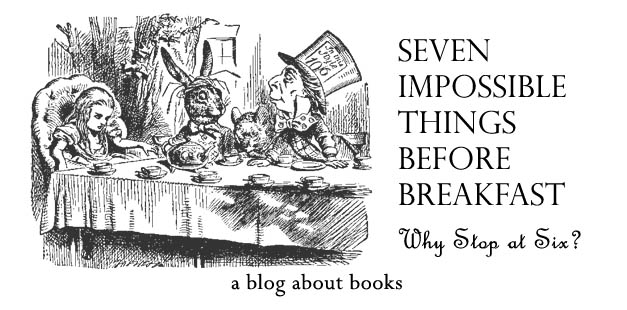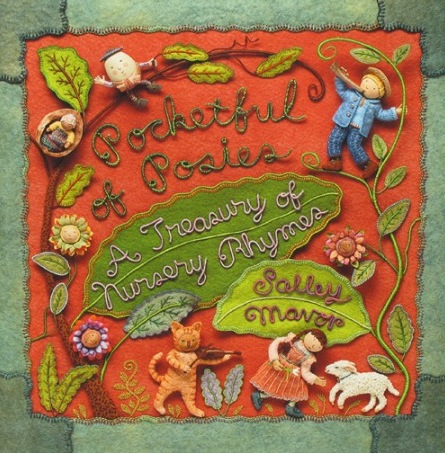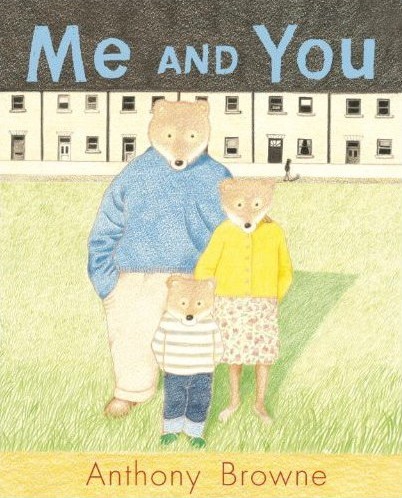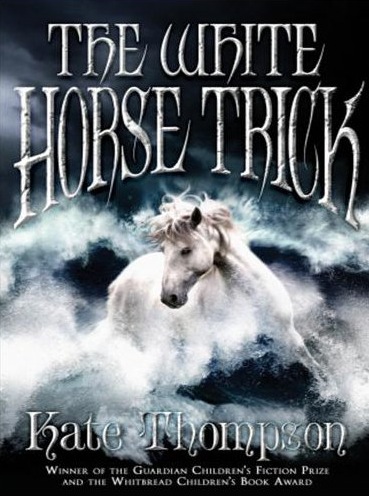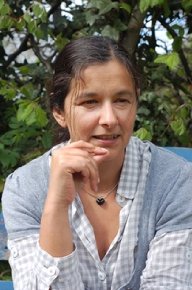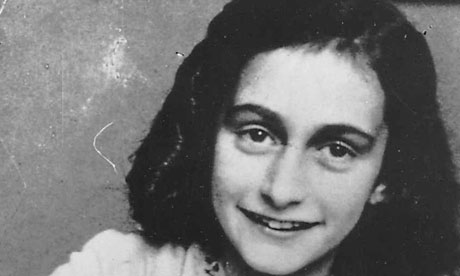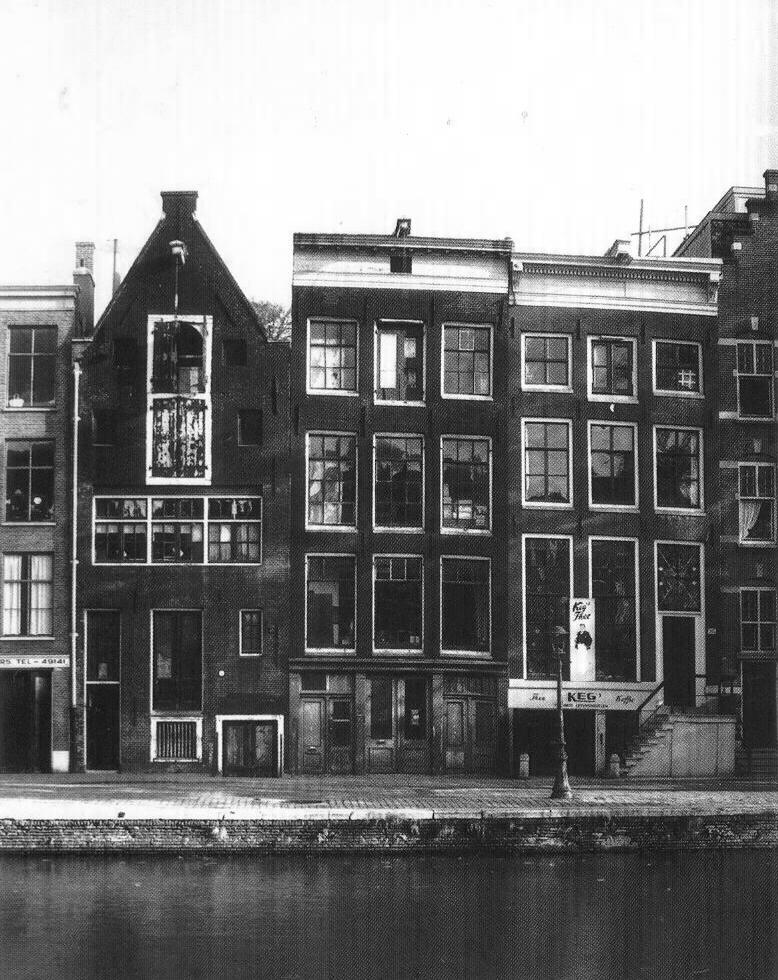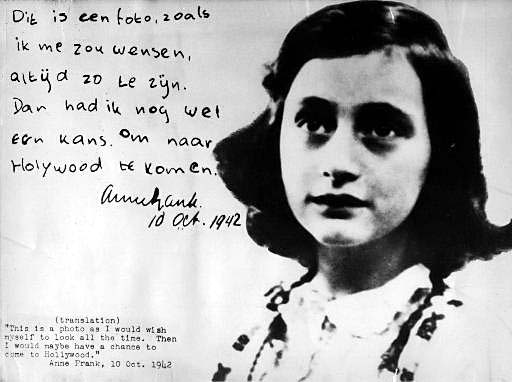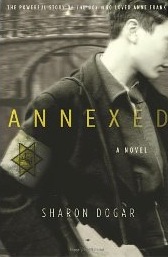A Quick Cup of Coffee with Roger and Martha And a Peek at A Family of Readers
I've got three coffee cups out this morning to tell you what book has, arguably, replaced this http://www.indiebound.org/book/9780763631413 as my favorite gift for friends having babies (well, maybe I can get both books for them), not to mention anyone who tells me they want to study children's literature. In September, Candlewick released A Family of Readers: The Book Lover's Guide to Children's and Young Adult Literature http://www.indiebound.org/book/9780763632809, written by Horn Book editor Roger Sutton http://readroger.hbook.com/ and executive editor Martha V. Parravano. It's a wonderful read, and the book's very premise was a smart one: As Roger writes in the introduction, "your passion for reading isn't necessarily accompanied by a knowledge of children's books, and that's where we come in."
As the sub-title tells you, this is a guide to children's literature for those families passionate about reading—yet who may not know how to navigate the sometimes overwhelming world of children's lit. "It is a book," he writes later, "for readers, people who need books as much as food or air, and whose idea of the perfect vacation and/or evening meal is to have more time to read." Even calling it a "guide" is somewhat misleading. To be sure, it's a guide, yes. But this isn't your go-to book for those parents who don't read and suddenly decide they want their kids to. Don't expect shallow lists of how-to's and what-to-read's (or, as Roger writes, "not bland lists of dos, don'ts and surefire recommendations"). Refreshing, indeed. This is a collection of well-crafted essays (Naomi Shihab Nye on poetry, Jon Scieszka on humor, Mitali Perkins on girl books), many previously printed in The Horn Book, about children's literature, touching mainly upon, as Roger writes, how to give children the skills and opportunities to read, how to create books that both interest and respect them, how to allow children ownership of their reading, and how to know when and how to guide young readers, as well as knowing how to leave them alone already, when they need it.
The book is constructed around these guiding thoughts, opening with chapters on books for babies and picture books. “Part Two: Reading with Them” covers easy readers and chapter books. “Part Three: Reading on Their Own” delves into genres (offering up thoughtful essays on fantasy, historical fiction, humor, and adventure), nonfiction (covering biographies, science, and poetry, girl books, boy books), and "message" books (considering such issues as censorship, didacticism, bibliotherapy, and more). “Part Four: Leaving Them Alone” is your go-to section on books for teens.
The essays in the book are written by authors, illustrators, reviewers, professors, poets, editors, and much more. Horn Book nerds will note many favorite series and articles re-printed, such as the "what makes a good book" series. But there's plenty of new stuff here for children's lit aficionados, coming from the calm, cool, and collected minds of Roger and Martha. (I don't know about you, but one of my favorite things about The Horn Book is their studied, let's-take-a-breath-folks response to whatever the latest trend or crisis in children's lit is.) And there are so many engaging essays here that I hardly know where to begin in covering them, but suffice it to say that, again, this is not only a great read for children's lit fans (consider getting a copy of this for incoming grad students of children't lit and library majors, I suggested to one friend who teaches), but it's also the perfect book to hand over to your book-nut friends with growing families, those who feel lost by all the choices in children's books out there. (Note: The book is also sprinkled with short interviews with such book-creators as Sendak and Katherine Paterson, all excerpted from The Horn Book.)
Throughout the book, Martha, Roger, and the essayists discuss and recommend many children's lit titles from both past and present. Each section of the book also ends with more recommendations, and the book's close features a detailed bibliography. Roger and Martha are here this morning, briefly, to note what books have been published since the book was completed that they would have really liked to have included.
The problem with a book like ours," Roger told me, "is both what you have to leave out and what you hadn't yet seen—the books just keep on coming, thank goodness! I would have loved to talk about Sharon Dogar's http://www.guardian.co.uk/books/2010/jun/22/anne-frank-sharon-dogar novel Annexed, a retelling of Anne Frank's story from the point of view of Peter, also hidden in the Achterhuis. Published too late to include in A Family of Readers, the book gave me tons I wanted to say about YA books, boy books and girl books, and how the Holocaust is presented in books for young people. Even the title is brilliant. I guess we'll have to write another book."
"For me," Martha added, "three new books illustrate the almost limitless possibilities of children's books. Salley Mavor's Pocketful of Posies, a collection of nursery rhymes that I hope will become a classic (along with the Iona Opie/Rosemary Wells Mother Goose collections), features scene after stunning scene created in embroidery—which sounds quite static, and yet the pictures are not only gorgeous but also full of life and movement and story."
Martha continues, "Anthony Browne's Me and You turns 'The Three Bears' on its head, providing an entirely fresh perspective on an age-old folktale; you will never think of Goldilocks in the same way again...
...And I still can't get over the audacity and genius of Kate Thompson's White Horse Trick, which combines Irish mythology, climate change, and the story of Genesis in one astonishing novel."
Publishers Weekly calls Roger's and Martha's A Family of Readers "an indispensible guide." Not to be missed, I say. I thank Martha and Roger for stopping by.
Posted by Jules, October 28, 2010 at Seven Impossible Things Before Breakfast
***
Sharon DogarEd. Note: Annexed, the Sharon Dogar novel cited by Roger Sutton in Jules’s column above, was met with a firestorm of media criticism upon its publication this past summer. Below is a guardian uk story about the controversy, in which reporter Richard Lea offers a fair account of both sides' arguments for and against the novel's accounts of its protagonists' Holocaust experiences. (The novel is subtitled “The Powerful Story Of The Boy Who Loved Anne Frank.”) At the end Lea notes that the resulting "media storm" was creating "more heat than light,” which sounds about right and all too typical of the 24/7 news cycle. We would like to point out that Jules, as the mother of two children herself, is sensitive to the increasing sexploitation of underage youth in popular culture, and we have no reason to believe Mr. Sutton is any less diligent in these matters. The complaints against Ms. Dogar's novel strike us as a tempest in a teapot, as nothing in it compares to the boldness of Anne Frank's own diary accounts of her sexual awakening while in hiding from the Nazis. Moreover, the author depicts these episodes in a tasteful, not sensationalistic, manner, in keeping with the tenor of the entire book. Note, too, that Ms. Frank’s only living relative, Buddy Elias, was consulted about the book, read the final draft and conveyed to Ms. Dogar (who is otherwise a children’s psychotherapsit residing in Oxford, England) his best wishes for the novel’s success. Nevertheless, for parents who might be considering Annexed as a gift book for their children, we offer the guardian uk report FYI, and would additionally praise Ms. Dogar’s novel as a work of considerable literary merit that adds an interesting new wrinkle to the compelling story of Anne Frank.
Sharon Dogar fights back over 'sexed up' Anne Frank novel
Children's novelist defends Annexed, which re-imagines the relationship between Anne Frank and Peter van Pels
By Richard Lea
Timeless teenager: The adolescent relationship between Anne Frank and Peter van Pels is explored in Sharon Dogar's novelThe contested legacy of Anne Frank, the teenage girl whose diaries have captured the imagination of generations and brought to life the horrors of the Holocaust, has sparked a new row, after a British writer was accused of "exploitation" in her novelization of Frank's wartime experiences.
The co-founder and executive director of the Anne Frank Trust, Gillian Walnes, reacted angrily to her first sight of Sharon Dogar's novel Annexed, saying that her re-imagining of the relationship between Anne and a boy who hid from the Nazis in the same Amsterdam building, Peter van Pels, was "not fair on someone who was a living person".
"I really don't understand why we have to fictionalize the Anne Frank story, when young people engage with it anyway," she said. "To me it seems like exploitation. If this woman writer is such a good novelist, why doesn't she create characters from scratch?"
Dogar, who said that she "might be in shock" after the Sunday Times accused her of "sexing up" Anne Frank, said that she was "worried herself" about being exploitative as she wrote.
"The problem is that a writer doesn't always choose what they write," she said. "The idea of this book plagued me for 15 years. I tried quite hard not to write it, mostly because I had similar concerns; I couldn't do it justice, I wasn't sure it was legitimate, I didn't believe I had the talent to portray the horror of the Holocaust. But sometimes stories just come and you can't stop them."
"How it might have felt to be written about by her is central to the novel," she continued, "and so perhaps it's no surprise that the question of how she might have felt to be written about has arisen. I often wonder what she might think."
In the middle of the three buildings shown above is the home of Anne Frank at 263 Prinsengracht in Amsterdam. The family built an annex that included the back side of the house and the top floor so they could hide from the Nazis.Dogar says she made every effort to portray the events and characters accurately, citing a correspondence with Frank's only surviving relative, Buddy Elias, in which she says she assuaged his initial doubts over the book, and he finished by wishing her well with it.
"I'm certainly sad that many people's first view of my book doesn't reflect the truth of it," she said.
Her editor at Andersen Press, Charlie Sheppard, said that they had been in touch with Elias for many months, and had sent him an early version of the book to look at. "We spoke to Buddy, we spoke to [Anne Frank's] biographer, we spoke endlessly about each word," she said, "because the last thing anyone wanted was to cause any offense."
The novel, which opens with Peter on the point of death, is told as a series of diary entries interspersed with the thoughts of the dying boy, charting the story of the time he spent hiding with the Franks in the Annexe at 263 Prinsengracht, his discovery and his time in the Mauthausen concentration camp. But it is the small part of the book that concerns Peter's teenage sexuality that has angered Walnes, and led her to accuse Dogar of "putting 21st-century mores on to young people" from a different era.
"I don't understand why this story has to be sexualized," she said, "and why Peter's character has to be changed."
Dogar rejects the accusation of anachronism, countering that there is nowhere in the book where they come close to breaking the taboo around sex, and that "in the book the reality of just one truly intimate touch was enough to stop them".
"Whilst it's true to say that children of the war years lived according to different cultural mores and social strictures," she said, "it's also true that there are some fundamental and universal human feelings that are biological rather than social. The state of adolescence existed before 'teenagers' were invented. Adolescent hormones have always been in conflict with social rulings. This is why some of Anne's thoughts remain as powerful and meaningful today as they were 60 years ago."
Although Peter does worry in the novel that he "will never make love to a girl,” and there is a scene in which Anne and Peter kiss, Sheppard rejects the accusation that the book is mainly concerned with sex.
"The sexual awakening of Anne plays more of a major part in her diary than this book," she said, citing moments in the diary where Anne discusses her periods. The diaries were first published in the face of some opposition from relatives and acquaintances in 1947, in a version edited by Anne's father Otto that did not include these passages.
For Dogar the inspiration for Annexed "was not really Anne herself, but Peter van Pels.” She acknowledged the responsibility that novelists have to real characters but suggested that "there is no one truth alone.
"Otto Frank remarked, upon reading Anne's diary, that he did not recognize his daughter as she described herself," she continued, "and that 'from this' he could only conclude that 'as parents we do not really know our children.’ Historical novelists are, in a sense, in loco parentis to their characters, and like parents, they have a duty to try and understand their subjects."
A photo of Anne Frank with her handwritten note: ‘This is a photo as I would wish myself to look all the time. Then I would maybe have a chance to come to Hollywood.’ Anne Frank, 10 Oct. 1942The children's writer John Boyne, whose controversial novel The Boy in the Striped Pyjamas tells the story of two boys divided by a concentration camp fence and was made into a film in 2008, defended the role of children's fiction in dealing with subjects as charged as the Holocaust, as long as the writer employs "an accessible and intelligent style to engage the young reader and to make him or her question the world in which they live.”
"There are those who would say that a strict adherence to the facts is crucial," he said, "but fiction by its nature distorts reality while nevertheless reflecting it. Place a fictional character into a historical setting and that world is already corrupted; accept that and move on to examine what the novelist is trying to say."
According to Boyne, novels can play a "huge role" in educating young people. "Children will switch off if they are lectured," he continued, "but tell them a good story with characters they can relate to and you're halfway there."
Dogar called on people to focus on the book itself rather than articles written about it in the press. "I've done my best with Annexed," she added, "and it's now for readers to decide whether or not I've succeeded."
With the media storm surrounding her generating rather more heat than light, Dogar may come to regret the power of the written word. As Peter says to Anne in a discussion about her diary towards the end of the book, "It's on a page where it looks like the truth—even if it isn't."
Founder/Publisher/Editor: David McGee
Contributing Editors: Billy Altman, Laura Fissinger, Christopher Hill, Derk Richardson
Logo Design: John Mendelsohn (www.johnmendelsohn.com)
Website Design: Kieran McGee (www.kieranmcgee.com)
Staff Photographers: Audrey Harrod (Louisville, KY; www.flickr.com/audreyharrod), Alicia Zappier (New York)
E-mail: thebluegrassspecial@gmail.com
Mailing Address: David McGee, 201 W. 85 St.—5B, New York, NY 10024

